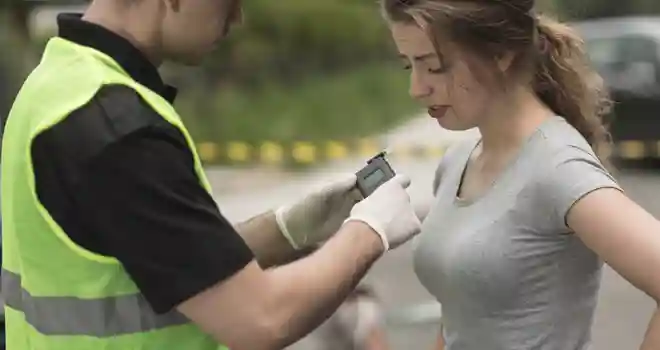
When a driver gets behind the wheel, they need to be focused and alert to reach their destination safely – and to do so without endangering others. Ontario’s RIDE Program (Reduce Impaired Driving Everywhere) helps make our roads safer.
Sharing the road with hundreds and even thousands of other people during a trip presents the possibility for danger. No matter how safe and responsible you are, certain factors can raise the risk of accidents.
Those who choose to get behind the wheel while intoxicated put themselves and everyone else on the road at risk. RIDE programs minimize the chances of these tragedies occurring.
The sobriety-testing program is usually put into effect in high-risk areas or at high-risk times like the holidays to detect if motorists are under the influence while behind the wheel. These programs aim to reduce accident rates by taking drunk drivers off the road.
What is RIDE?
RIDE is a sobriety-testing initiative. Used by police in Ontario, the program was developed in 1977. Originally known as Reduce Impaired Driving in Etobicoke during its 1977 inception, the program was eventually given a more universally applicable name.
The program involves police-conducted roadside checks to determine whether drivers are under the influence of drugs or alcohol. Designed in response to an increase in drunk-driving accidents and fatalities, the program serves as both a preventive measure and a deterrent.
Since people are more likely to attempt driving after a couple drinks during times of celebration, RIDE is more prominent during the holiday season. Big-traffic events like Christmas, New Year’s Eve or even the night after major sporting events can make for some dangerous road conditions.
How Does the Program Work?
Police set up a checkpoint on common throughways. Officers who oversee the checkpoint use are usually from the jurisdiction where it takes place.
Upon entering the checkpoint, drivers must roll down their window and speak to the officer. The officer then greets the driver. If the officer believes the driver is under the influence of drugs or alcohol, they can ask the driver to participate in a roadside sobriety test or breathalyzer test. It is illegal to refuse a breathalyzer test.
A breathalyzer unit detects the presence of alcohol in a person’s system. This highly advanced technology can detect the presence of alcohol in a person’s system, even if it is only present in very small amounts. Even a driver who barely feels the effects of alcohol can be a risk. Meaning, it is important for officers to detect this before an accident occurs.
OPP specialists known as Drug Recognition Evaluators can also help identify drug impaired drivers.
RIDE Program Controversy
Some people believe that RIDE programs are a violation of the Canadian Charter of Rights and Freedoms. Many believe the program serves to erode privacy, especially since it requires the participation of drivers who are not under the influence.
An exemption was made as officials ruled the Charter could be violated in this case but only for instances regarding the RIDE program. Officials have cited the program’s potential to create safer travel as a reason for allowing the change.
RIDE programs have spawned many incarnations around the world that function similarly. No matter the type of program, police officers create a checkpoint with their cruisers, pylons and flares. Most programs require drivers to speak with an officer before moving on. In some cases, drivers must get out of their vehicle to take a test before proceeding.
Local police often warn drivers of upcoming RIDE programs. Some people believe that warning drivers about upcoming campaigns defeats the purpose of the program. However, sometimes just knowing law enforcement will be out in a local area is enough to deter drunk driving.
The Effect on Safety and Insurance
The prospect of sharing the road with an inebriated driver is scary for anyone. The Ontario Provincial Police state that in 2015 there were 72,039 impaired driving incidents. Of those, 122 resulted in death. The impact of these incidents has led to strong support for the program. Mothers Against Drunk Driving (MADD) are proud supporters of the RIDE Program.
Not only does the possibility of drunk drivers create a tense situation for everyone, it changes the game regarding insurance. Insurance providers understand these dangers, and many worked to offer this type of protection in their policies.
Impaired drivers face steep penalties and fines. Impaired driving is a serious offence. As a result, drivers with a conviction cannot return to the road until they prove they are responsible.
Continuing To Combat Impaired Driving
Many automotive manufacturers, legal departments and safety advocates have turned to technology to tackle the drunk-driving problem. Some of these solutions use similar equipment as those in the RIDE program.
Some vehicles have breathalyzers installed in them. Like the ones used in roadside checks, these devices require the driver to blow into a tube. This then activates a device to check their blood-alcohol content. These units are installed onto ignitions. The units prevent a car from starting until the driver has tested negative for alcohol.
RIDE programs have been a big factor in the history of improving transportation safety. Despite their mixed reputation, their effectiveness in tackling impaired driving has seen proven results.